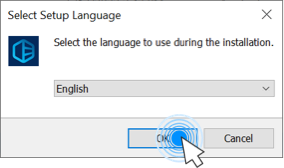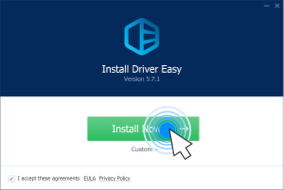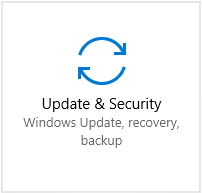
- Run Windows Update Troubleshooter
- Restart Windows Update related services
- Manually download and install updates
- Run DISM and System File Checker
- Disable your antivirus
- Update your drivers
- Restore your Windows
Method 1: Run Windows Update Troubleshooter
Windows Update Troubleshooter is a tool released by Microsoft that can help you troubleshoot issues with your Windows Update. You can run it to check your Windows Update when it fails to work properly. To do so: 1) Download Windows Update Troubleshooter (the program is from a Microsoft site and it’s verified and safe). 2) Run the tool you’ve just downloaded and follow the on-screen instructions to complete the troubleshooting process.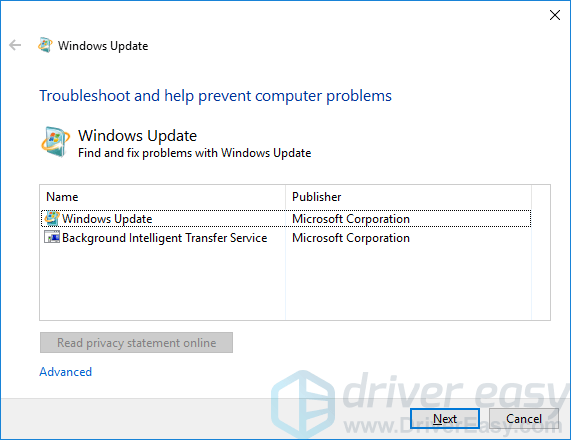
Method 2: Reset the Windows Update related components
Your Windows Update may fail to update your Windows because its components are corrupted. These components include the services and temporary files and folders associated with Windows Update. You can try resetting these components and see if this can fix your problem. To reset these components: 1) Click the Start button in the lower left corner of your screen, then type “cmd“. In the list of results, right-click Command Prompt and select Run as administrator.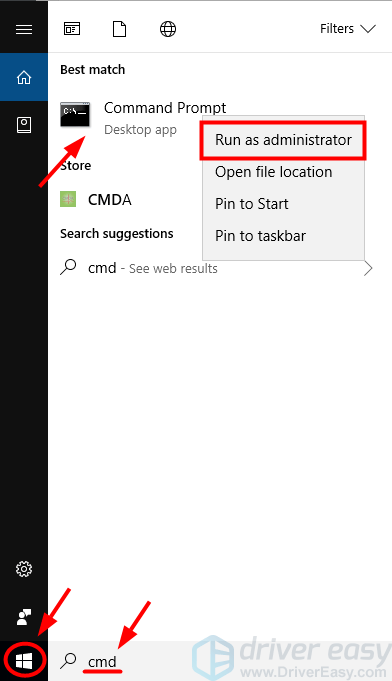 2) In Command Prompt, type the following lines of command and press Enter on your keyboard after typing each:
2) In Command Prompt, type the following lines of command and press Enter on your keyboard after typing each:
- net stop bits
- net stop wuauserv
- net stop appidsvc
- net stop cryptsvc
- Ren %systemroot%\SoftwareDistribution SoftwareDistribution.old
- Ren %systemroot%\system32\catroot2 catroot2.old
- net start bits
- net start wuauserv
- net start appidsvc
- net start cryptsvc
Method 3: Manually download and install updates
If Windows Update can’t help you download certain system updates, you can try doing so on your own. Microsoft has put all its system updates online, and you can download these updates and install them on your computer without the help of Windows Update. To manually download and install updates: 1) Click the Start button in the lower left corner of your screen. Then type “information“. In the list of results, click System Information.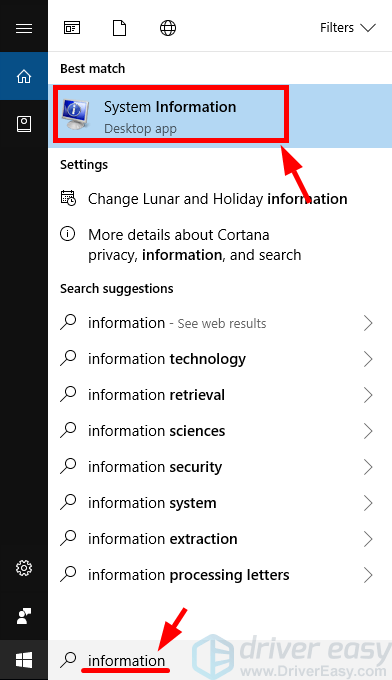
This is an important piece of information and you should note it down. It will be useful when you are looking for the updates that match your Windows later.
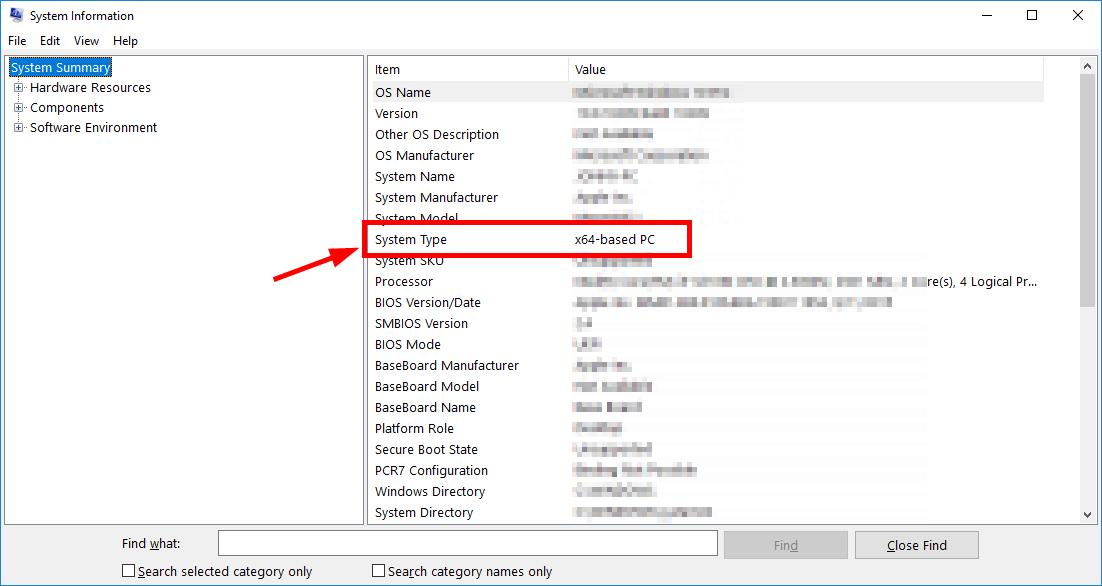
Note down the codes of these updates that start with “KB“.
![]()

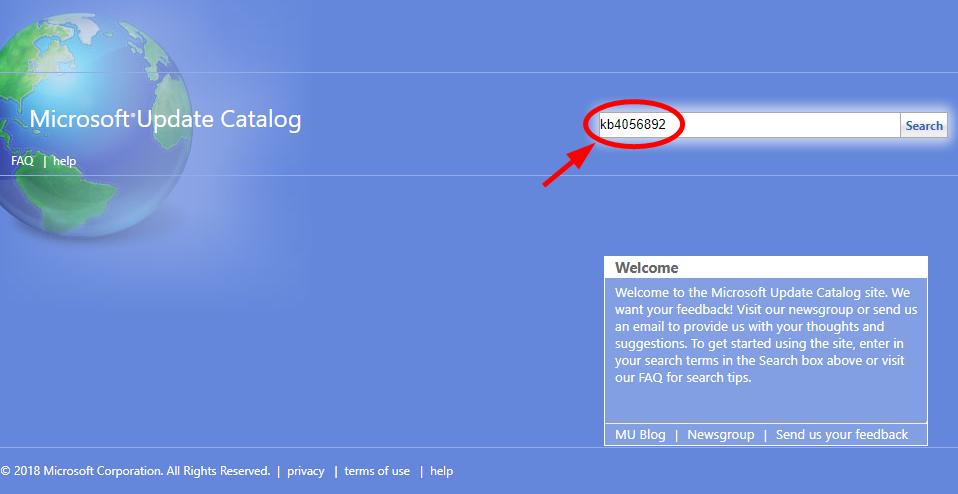
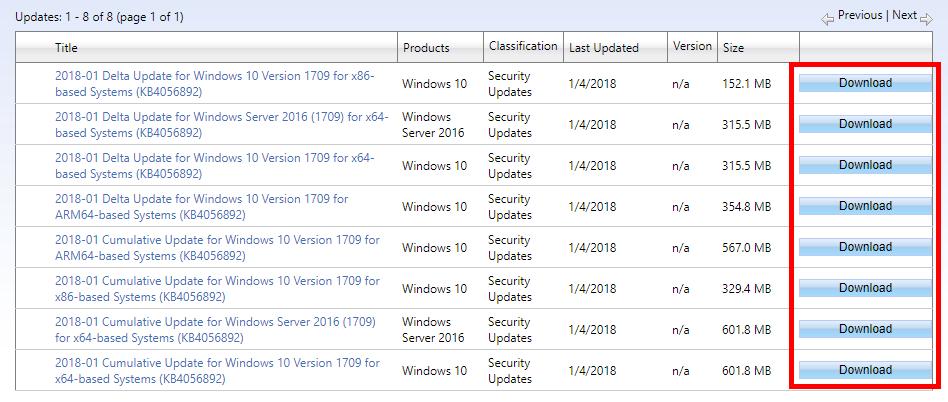
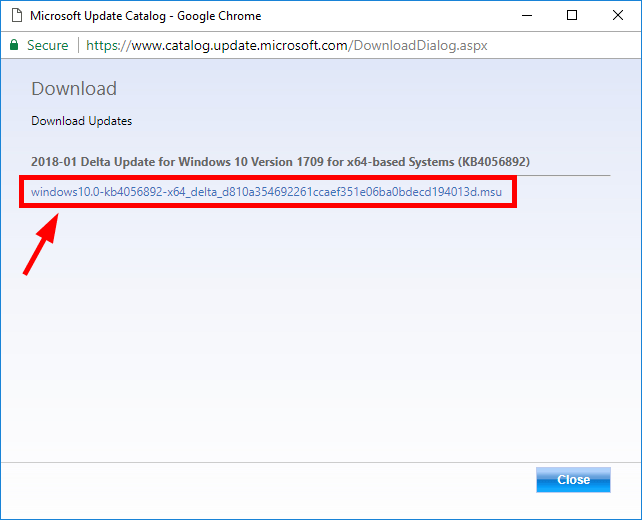
Method 4: Run DISM and System File Checker
It’s also possible that your Windows Update can’t work because of the corrupted files on your operating system. Windows has two built-in tools called SFC (System File Checker) and DISM (Deployment Imaging and Servicing Management) that scan your computer and fix various issues on it. To run these tools: 1) Click the Start button in the lower corner of your screen. Then type “cmd“. Right-click Command Prompt in the list of results and select Run as administrator.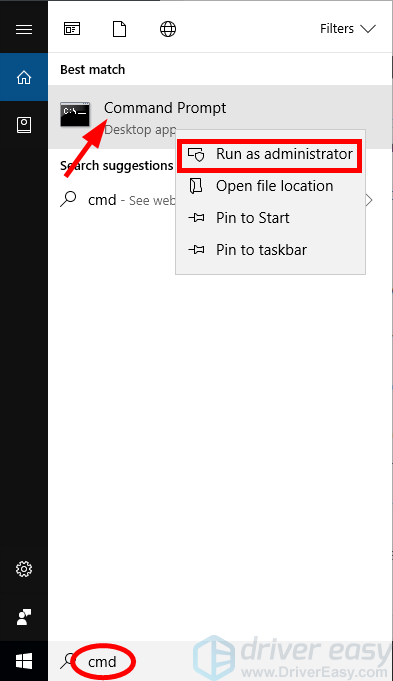
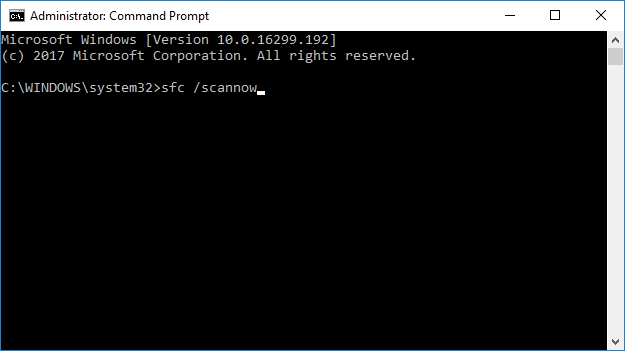
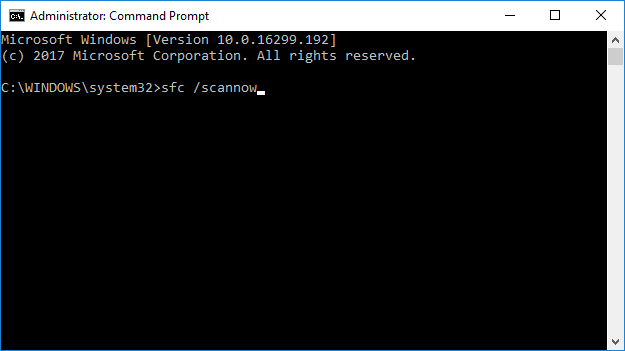
Method 5: Disable your antivirus
Sometimes your system can’t install new updates due to the interference from your antivirus software. You can temporarily disable your antivirus and check if the problem persists. (Consult your antivirus program documentation for instructions on disabling it.) If this resolves the problem, contact the vendor of your antivirus software and ask them for advice, or install a different solution.IMPORTANT: Be extra careful about what sites you visit, what emails you open and what files you download when your antivirus is disabled.
Method 6: Update your drivers
You may get issues with your Windows Update if you are using wrong or out-of-date device drivers. You should regularly check your device drivers and keep them up to date so as to prevent your computer from many annoying issues. But you may not have the time or patience to check and update your drivers manually. If you want to have this done easily and automatically, you can use Driver Easy. Driver Easy will automatically recognize your system and find the correct drivers for it. You don’t need to know exactly what system your computer is running, you don’t need to risk downloading and installing the wrong driver, and you don’t need to worry about making a mistake when installing. You can update your drivers automatically with either the FREE or the Pro version of Driver Easy. But with the Pro version it takes just 2 steps (and you get full support and a 30-day money back guarantee): 1) Download and install Driver Easy. 2) Run Driver Easy and click the Scan Now button. Driver Easy will then scan your computer and detect any problem drivers.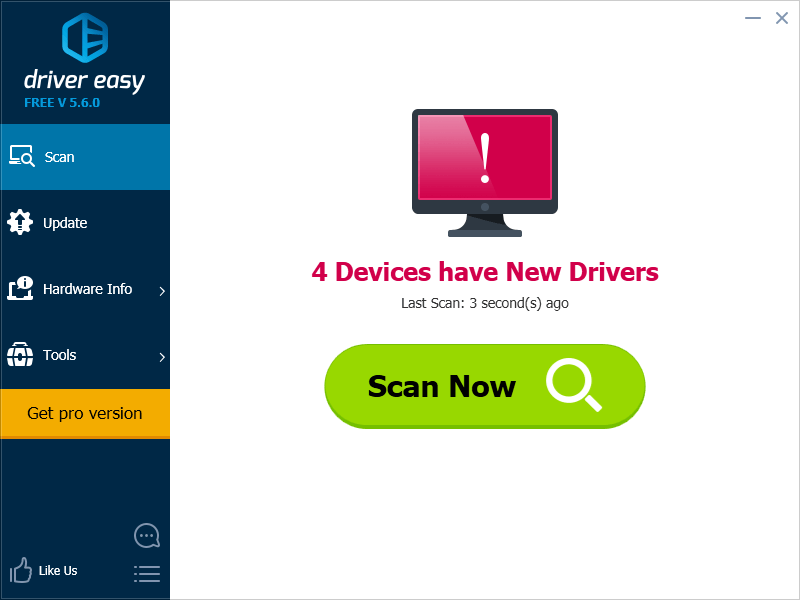 3) Click the Update button next to each driver to automatically download and install the correct version of this driver (you can do this with the FREE version). Or click Update All to automatically download and install the correct version of all the drivers that are missing or out of date on your system (this requires the Pro version – you’ll be prompted to upgrade when you click Update All).
3) Click the Update button next to each driver to automatically download and install the correct version of this driver (you can do this with the FREE version). Or click Update All to automatically download and install the correct version of all the drivers that are missing or out of date on your system (this requires the Pro version – you’ll be prompted to upgrade when you click Update All).
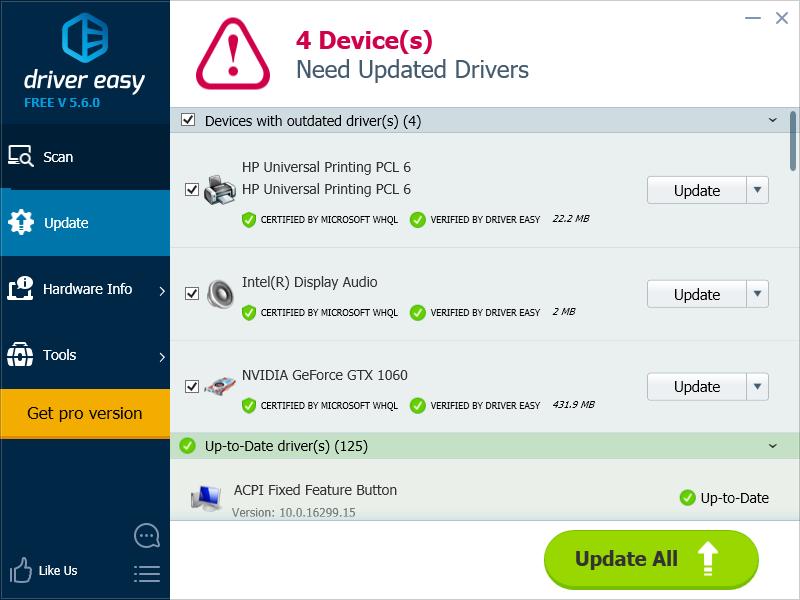
Method 7: Restore your Windows
Perhaps the issues with your Windows come from some changes you’ve made to your system. You can perform a system restore. This will restore your system from a restore point (you need to have one that has been created before your Windows Update issue occurs) undo those changes made. To do so: 1) Click the Start button in the lower corner of your screen. Then type “restore“. In the list of results, click “Create a restore point“. The System Properties dialog will appear.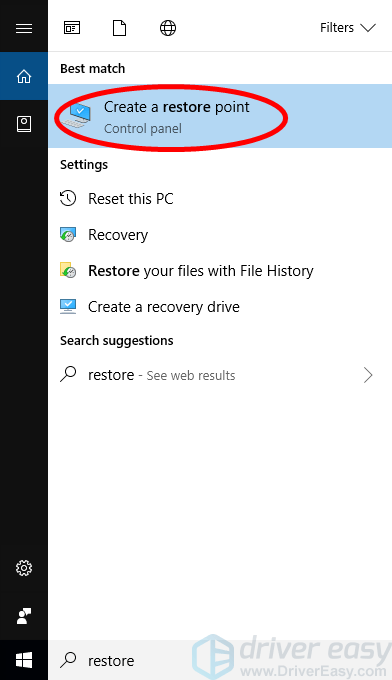
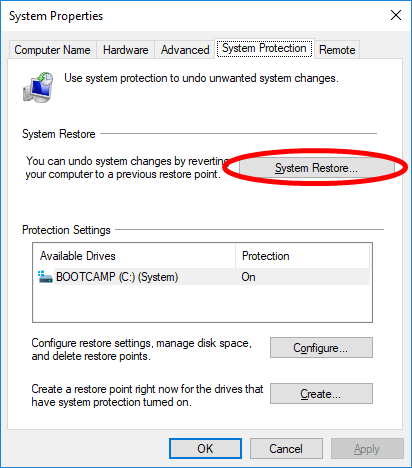
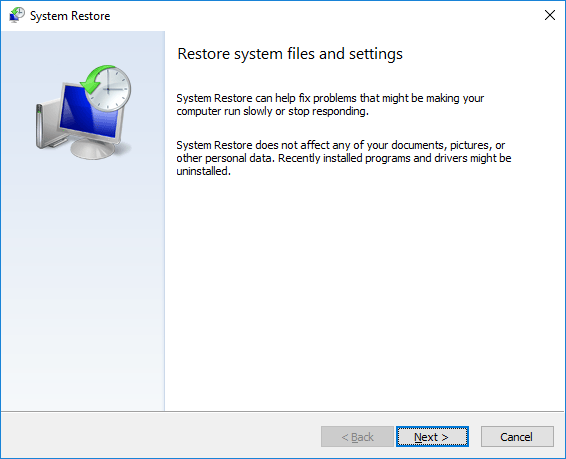
21
21 people found this helpful
0 Comments
Most Voted




